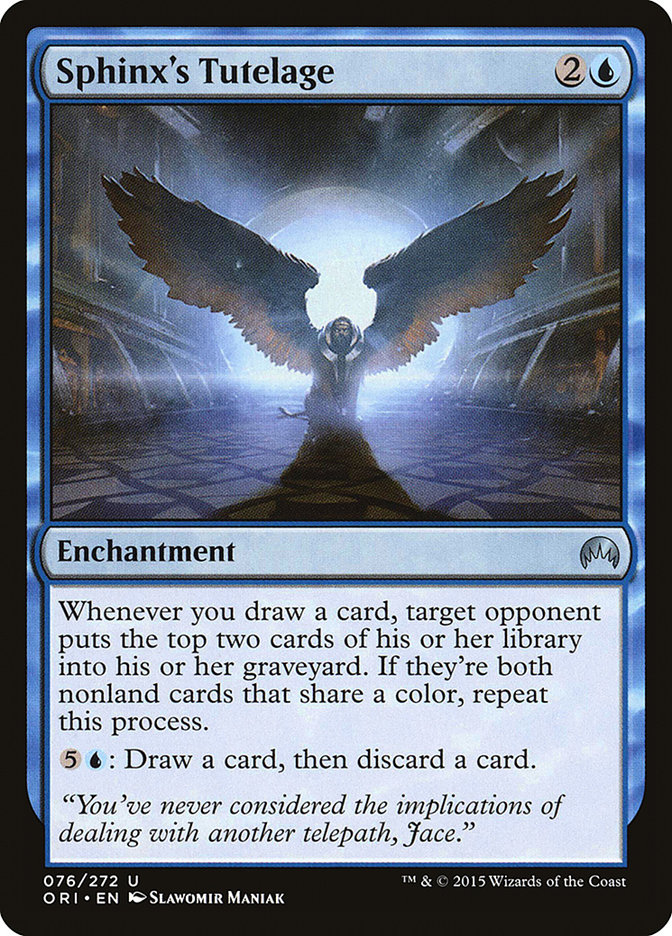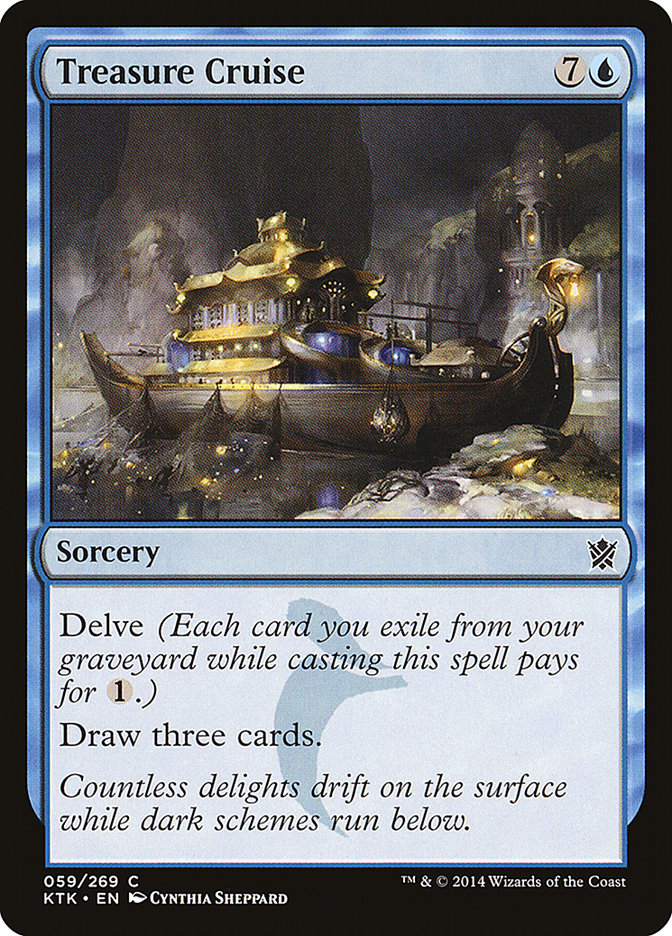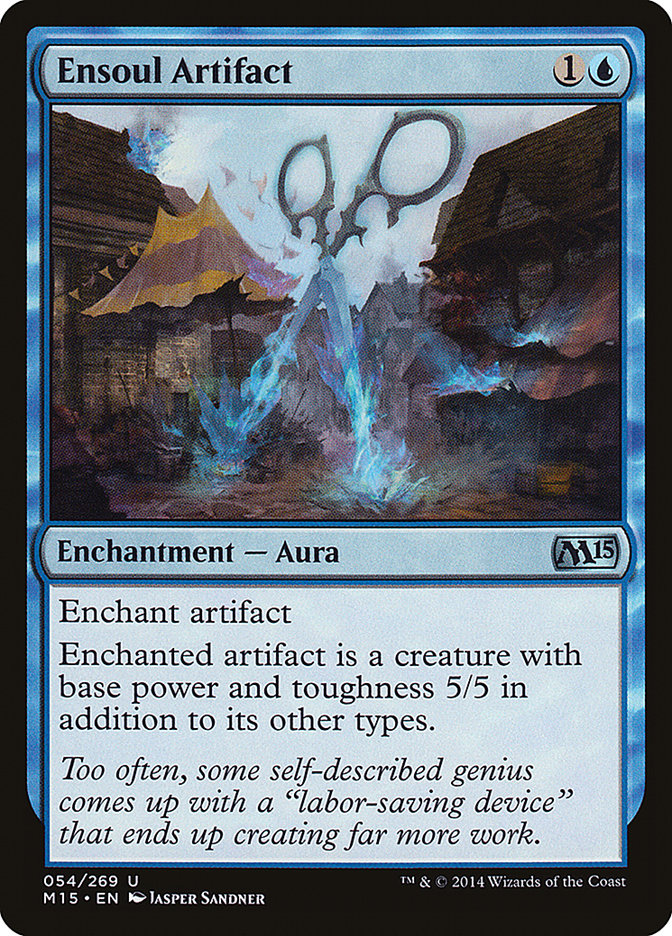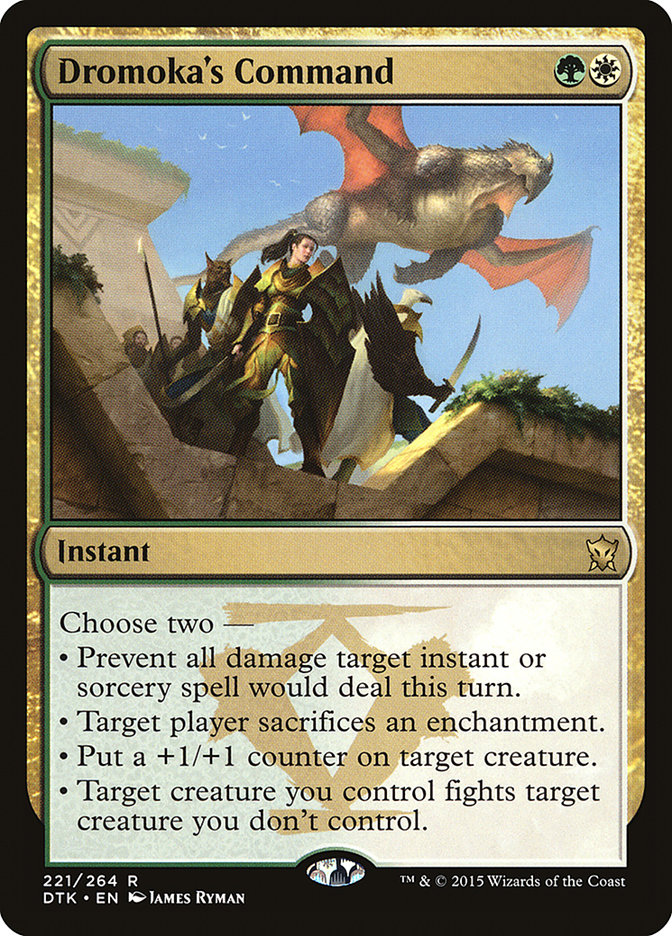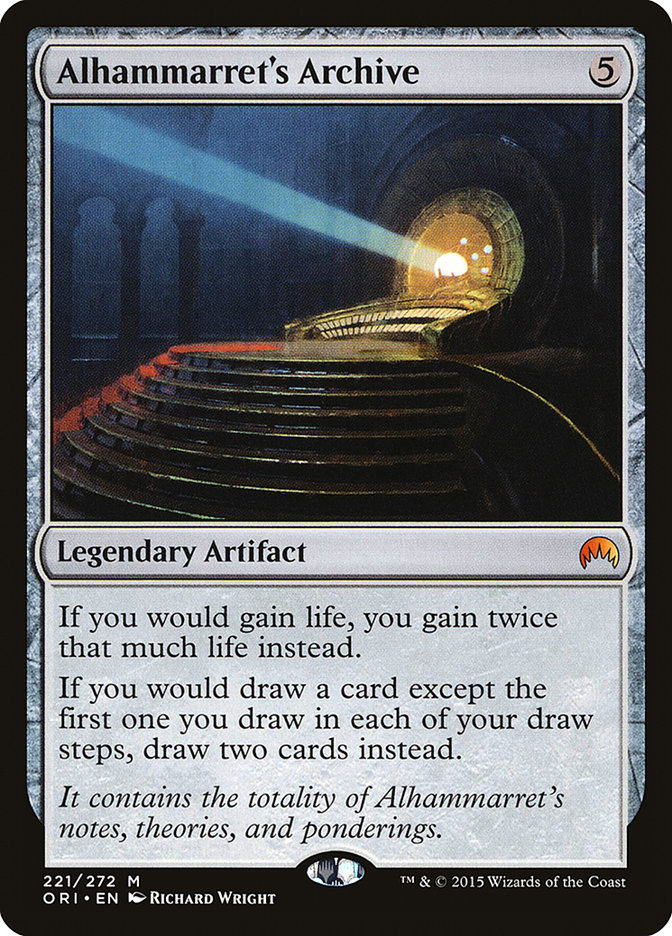On the desktop of my laptop is a never-to-be-finished piece I began writing a few weeks ago, before the Pro Tour. Re-reading it elicits a distinct tone of frustration. The 2014-2015 Pro Tour season was not going well for me at the time and ultimately concluded in a similar fashion – poorly. I dropped from Pro Tour Magic Origins with two rounds to go, hoping to find escape from the tournament hall in the beautiful view Vancouver’s pier offered. Walking by the water, familiar feelings resurfaced, including the reality that I may never play on the Pro Tour again. I’d confided in friends previously regarding my selfish reflection, that my biggest critic – myself – had been embarrassed of my results for some time. Boarding my flight Monday evening from Canada to California, it was not my intention to play Grand Prix San Diego, rather to simply visit before attending a friend’s wedding in Sonoma Valley the following week. An extended break from the game was a real possibility.
As it turns out, my public plot a week before leaving for Vancouver to steal the groom, Miles, from his fiance ten days prior to their wedding went over a little too well with her. By Thursday night, we had plans to pick up Ross Merriam outside of San Francisco before making the nine-hour drive to San Diego.
Before delving into the deck I won the Grand Prix with and the bizarre circumstances surrounding my playing it, I want to highlight the severe contrast between the somber nature of the first paragraph of this piece and my surreal state of happiness as the present author. Having taken a two-week hiatus from writing, I think it important to bridge the clear disconnect in attitude between the Pro Tour and now. That being said, I still can’t properly convey how much this Sunday meant to me. While ultimately hoisting the trophy is satisfying in a way that I don’t want to understate, after clinching the Top Eight there was no real pressure. Receiving such a massive amount of encouragement from friends, loved ones, teammates, and even folks I’d never met was incredible. The self-validation was invaluable.
Hopefully you’re still with me. Let’s get to the deck.
Creatures (4)
Lands (27)
Spells (29)
- 4 Anger of the Gods
- 2 Whelming Wave
- 4 Treasure Cruise
- 4 Tormenting Voice
- 1 Dig Through Time
- 1 Monastery Siege
- 2 Roast
- 4 Sphinx's Tutelage
- 2 Send to Sleep
- 1 Alhammarret's Archive
- 4 Magmatic Insight
Sideboard

First of all, yes, this wasn’t my first choice of deck to play. I was confident that I would be able to borrow Abzan cards from either Gerry or Ross, but both of them had (thankfully) misplaced their goods. After relaying this information, Seth Manfield suggested that he might be willing to switch decks with me if we could get a copy of Andrew Cuneo’s U/R Sphinx’s Tutelage deck from the Pro Tour.
I sat next to Cuneo during round four of that event and was one of the first to see it in action. I was intrigued but ultimately brushed it off at the time. If I was a more intuitive individual, I may have found more encouragement in the fact that Seth said he had never won against it on Magic Online when I’m basically taking laps around the room when I manage to beat him with anything. Regardless, I trusted his gut and it was an accessible deck.
An hour before the player meeting, we theory-crafted a few changes. I wasn’t terribly interested in feeding my Jeskai or Mono-Red opponents more burn spells, so we cut Dictate of Kruphix for a Monastery Siege and a Roast. Adding Annul to the sideboard over Talent of the Telepath was a nod to the success of U/R Thopters at the Pro Tour and Constellation’s position as a means to counter the aggressive decks. I didn’t expect to play against U/B/x Control frequently and was successful in dodging it until the semis. Going up to four copies of Fiery Impulse was something I initially resisted, but it ended up being the best suggestion as it is so easy for the deck to enable Spell Mastery, giving the deck a Standard-grade Lightning Bolt against Mantis Rider and Fleecemane Lion.
The Pressing Question – Is The Deck Good?
This became a running joke with friends throughout the tournament. As my match points kept increasing and my record remained unblemished after the first day of competition, the answer slowly started to change from “I don’t know.”
U/R Tutelage is unlike anything else in Standard. While some may brand it as a Turbo Mill or even Turbo Fog deck, in reality it is more akin to an aggressive velocity-based deck, making it a viable comparison to Legacy Delver for me. Your control elements are light and ultimately can’t hang with most decks in a late-game position, but you are able to make up for that by having a great deal of redundancy with a much cheaper curve than the average opponent. If you are able to stick an early Sphinx’s Tutelage, the deck can win incredibly fast.
While some may be quick to criticize the deck’s ability to simply “spin its tires,” or just draw cards and functionally do nothing but continue to draw cards, the fact of the matter is that Tutelage is a card that most players are unable to interact with at all. Just by playing Magic and casting these spells, you are able to kill completely “hands off.” Treasure Cruise is the biggest offender in power level for the deck, as you are frequently able to cast it for three mana or less at speeds that got it banned in Modern due to Magmatic Insight and Tormenting Voice.
One of the biggest advantages to playing the deck is how consistent it is. U/R Tutelage plays one of the highest land counts in Standard, but doesn’t actually need many to operate. The rest of the deck is a pile of cheap velocity spells, light interaction, the best card in Magic Origins, and your three-mana win condition. As a result, you don’t mulligan often as you will frequently have enough lands to operate in any given hand while having “pitch-velocity” spells to discard the extra lands and ensure you do not flood.
In my brief interview with Marshall Sutcliffe at the end of the tournament, I alluded to the fact that the deck may have been better-positioned for GP San Diego as a result of the lack of the mulligan rule that was present at the Pro Tour. U/R Tutelage is remarkably bad at leveraging the rule because it doesn’t actually mulligan that much, especially compared to more aggressive and synergy-based decks. Further, it is also a deck that opponents are incentivized to mulligan against due to how many dead cards they are likely to have, especially in the first game. While I occasionally played against opponents who stumbled or had lackluster draws, I rarely hiccupped.
Can The Deck Beat X/Y/Z?
A common assumption appears to be that the U/R Tutelage deck is incapable of competing with Mono-Red, U/R Thopters, or Dromoka’s Command. It’s either that or that I miraculously dodged 50% of the decks that exist in Standard. I certainly don’t have a huge sample size nor am I taking a stance other than embracing my good fortune in the tournament, but the truth I’ve experienced is that all of these matchups are winnable.
You must put a clock on U/R Tutelage. The reality is that this deck is not only completely capable of racing back against other aggressive strategies, but it can also play a more controlling game against these decks and bury them in card advantage, especially after sideboard.
The Mono-Red matchup in particular is heavily hinged on Anger of the Gods. A 21-land deck that contains all red spells is rather vulnerable to Sphinx’s Tutelage’s Grindstone impersonation, and if given a few turns of reprieve from their creatures it is possible to race their burn spells. Jeskai is easier as they do not have the same inherent speed as the red deck but are forced to play a similar game. Fiery Impulse is particularly important in the latter for answering Mantis Rider. As one would expect, Radiant Fountain and Swiftwater Cliffs pull an incredible amount of weight and are much easier for U/R Tutelage to find in multiples than the average deck.
U/R Thopters is, well, largely about dodging a quick Ensoul Artifact on a Darksteel Citadel. Their creatures are far more anemic and expensive than red’s, and they do not have as much reach, but you can easily die to a fast Ensoul Artifact. Ghostfire Blade is also a potent weapon for insulating their creatures from your red removal spells. Annul is our best card against this deck, as it answers a turn-two Ensoul Artifact on the draw. I suspect that U/R Thopters will continue to fall out of favor as the weeks pass, as without the mulligan rule the deck is less consistent and it has an awful matchup against the G/W Aggro deck that Kibler and others are championing.
Fighting Dromoka’s Command is much trickier. When paired with Den Protector out of G/W Aggro, you are often forced into a more cat-and-mouse position where they must properly pressure you without running head-first into Anger of the Gods. It is imperative that you do not allow them to kill a Sphinx’s Tutelage with their Command and pick it up again with Den Protector without being severely punished for it. This is the major tension of the games. If given enough time, however, you are still a Treasure Cruise deck and can start to brute-force your way through Dromoka’s Command by getting enough lands onto the battlefield to play multiple copies of Sphinx’s Tutelage and then chain draw spells to deck them. Send to Sleep is an all-star here.
Abzan Aggro is significantly harder as they have a faster clock with Siege Rhino and also hand disruption in addition to Dromoka’s Command. I split my two matches against this archetype, taking my only loss against fellow Top Eight competitor Corey Burkhart. It is entirely possible that I punted the first game against him, and in the second I felt my hand was so weak that I had to take a risk by jamming my Tutelage and getting it destroyed alongside Jace. This is probably the nightmare matchup.
Sideboarding against these G/W/x decks is tricky, as you are incentivized to bring in some number of Negates to fight Dromoka’s Command. Your best option to get the game moving in a favorable position is to play Sphinx’s Tutelage on five with Negate backup, and as a result I settled on bringing in two, but I could even see three being the right number. Encase in Ice is great for buying time, being both an answer to Siege Rhino and useful insulation against Dromoka’s Command.
General Sequencing and Gameplay
As I discussed previously, I see U/R Tutelage as comparable to a Legacy deck, and once I adopted this mindset it became easier to sequence properly. Here are a general few things to note:
Magmatic Insight and Tormenting Voice are both your card draw and kill conditions. It is not at first intuitive when it is correct to cast or to hold them. For the most part, if your hand does not contain a Sphinx’s Tutelage they should be played as quickly as possible, but if you do have a Tutelage then they should be held to speed up your kill. That being said, if you are in a matchup where you are under pressure and your mana will either be accounted for later in the game to answer your opponent’s board or you simply won’t have time to deploy Tutelage quickly, then go ahead and play out your hand so that you can properly identify the optimal line. Not only do you have a ton of card draw in the deck, but powering up Treasure Cruise is important.
Magmatic Insight in particular reminds me a lot of the tensions present in Brainstorm. Getting over the fact that there is some risk in discarding your last land to play it when you are land light is often important. The deck plays 27 lands and finding cheap Treasure Cruises is the name of the game. You can also pitch excess Insights to Tormenting Voice and Jace.
 Speaking of Jace, one of the most unintuitive uses for him is his ability to fog a creature for a turn. You can do this by blocking an attacker and then tapping to transform him.
Speaking of Jace, one of the most unintuitive uses for him is his ability to fog a creature for a turn. You can do this by blocking an attacker and then tapping to transform him.
In other situations with Jace, you may not be incentivized to immediately transform him because you are already using your mana for the turn. In these cases, if you aren’t prompted to transform him on your opponent’s turn, wait until your next main phase. This will give you an additional draw step of information and nothing is lost by waiting.
Don’t forget about the Loot ability on Sphinx’s Tutelage! It is a powerful tool in the late game, especially when you are flooding or playing against a blue deck and do not want to let them use their mana on a counterspell. Frequently you should go ahead and do this in your main phase with access to a U/R land up so that you can cast either a Magmatic Insight or Treasure Cruise should you draw them.
While Monastery Siege is more frequently than not set to Khans, its Dragons mode can actually be quite relevant against the more burn-heavy versions of Mono-Red. Without creatures on the battlefield, it is difficult for them to cast Stoke the Flames or Exquisite Firecraft with the enchantment in play.
Moving Forward
Having had time to think about it more, is the deck good? Yes, it probably is, although I have some doubts about its ability to be a contender in the long term. Certainly as players become more accustomed to playing against it and adopting a particular mindset about how they should attack it, the strategy’s effectiveness will wane.
However, I do think it important to note that just jamming a few Disenchant effects into your sideboard and expecting to beat U/R Tutelage is a lazy and unrealistic expectation for fighting the deck’s redundancy. What actually works is sculpting an entire game-plan that constricts U/R Tutelage on every angle, like Abzan Aggro.
As for the deck itself, I think it was slightly misbuilt. Whelming Wave was remarkably poor throughout the entire tournament. While I admit that I did not play against G/R Devotion where the card is almost certainly at its best, it just doesn’t feel like the card fits. Yes, U/R Tutelage is often put into situations where it simply needs to buy some time, but Whelming Wave is so expensive and low-impact compared to what the rest of the deck is capable of doing. I would look into adding some additional reactive cards, potentially even just high-utility ones like Disperse.
The only other actual expensive card, Alhammarret’s Archive, can at times be completely monstrous. While it is sometimes difficult to cast, or you are unable to take a turn off and do nothing, the games where you are able to keep it on the battlefield you almost always easily run away with the game. It is also nice to play high variance-cards when you have eight ways to discard them. I have seen Magic Online lists that use both an Archive and a Pyromancer’s Goggles. While Goggles is less reliable for blowing through your deck, the ability to immediately cast a Magmatic Insight and draw four cards or copy Anger of the Gods to completely annihilate your opponent’s board position is appealing and something I’d want to look into.
As for the sideboard, I would not touch the Fiery Impulses or Negates. It remains to be seen whether Annul is a card worthy of playing in the future, but if U/R Thopters and the various Constellation decks stick around, or if the mirror match becomes a thing, then I suspect it will continue to be a powerful tool.
I would certainly cut the Whelming Wave and Seismic Rupture from the sideboard and look towards adding another Encase in Ice at the very least, as the card is just incredibly valuable against Dromoka’s Command and Dragon strategies, the latter of which should be poised for a comeback due to the rise of G/W creature decks.
While I’ve always tried to maintain a realistic perspective on all the good that Magic has brought to my life, I admit that the past year has been largely poking embers. I want to reiterate how fortunate I feel on so many levels surrounding my performance this past weekend, and I hope you enjoyed watching and/or reading about U/R Tutelage.
Finally the Bride – with Miles



